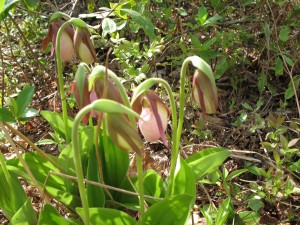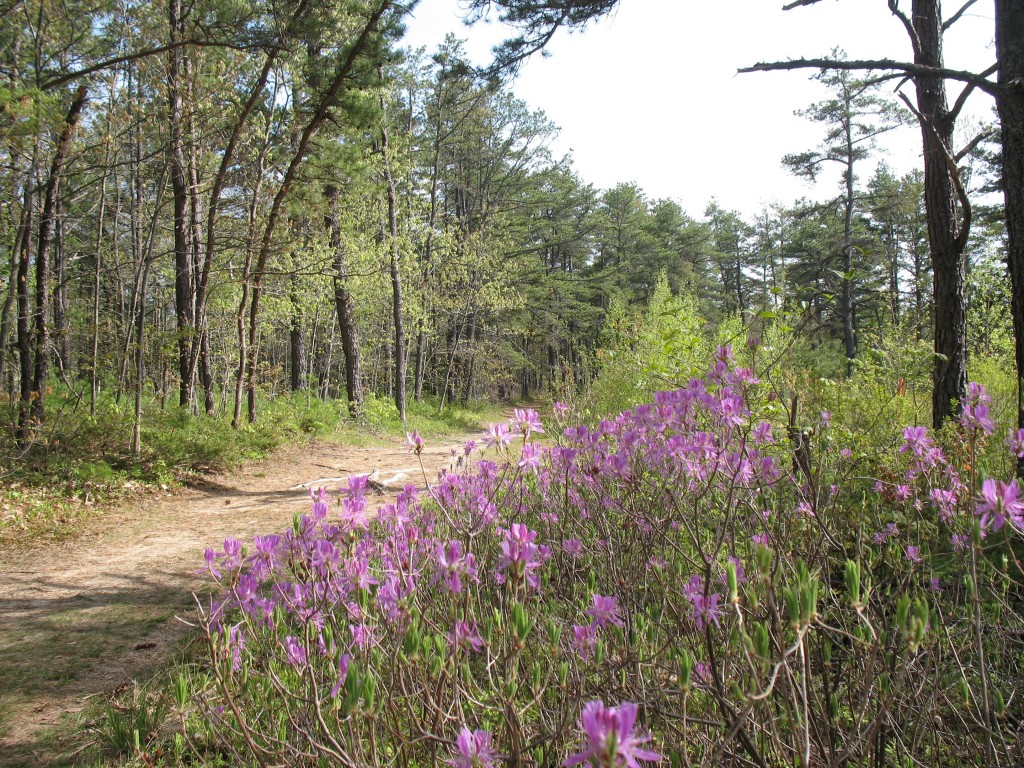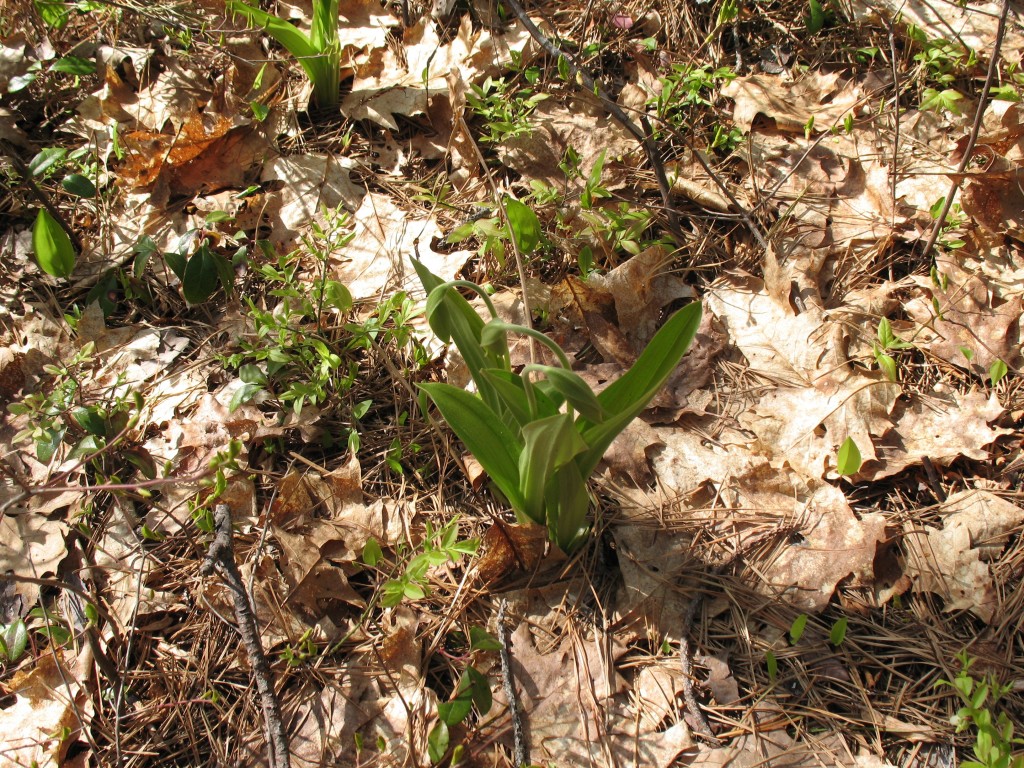Everywhere now in the dry pitch pine woods, the red lady-slippers over the red pine leaves on the forest floor, rejoicing in June, with their two broad, curving green leaves – some even in the swamps – upholding their rich, striped, red, drooping sacks. Journal, Thoreau, 6/5/56
Two hundred and thirty-six was yesterday’s count, and it was a glancing one. I was running and so scanning only one side of the trail, the right side on the way out and then on the way back, and that tally would have swelled had I paused to look more deeply. Still, that’s 118 princesses shod, a good hour’s work, I think.
What was orchid budding when I left for the mountains had bloomed when I returned. It is peak orchid season in our nearby woods, and, unless a searing heat arrives, these seemingly fragile flowers will last up to two weeks, longer than almost any other spring blossom.
I first started counting lady slippers when we lived in Concord and I spent a lot of foot-time in Estabrook Woods. There, they are not rare – sometimes I counted up to 50 along the various paths – but they are no as prolific as in our nearby Commons.
Here slipper-numerics nearly overwhelm. And yet I count anyway. Why, I wonder, is that? Habit accounts for some part of an answer, but there must be more. I don’t, for example, count the equally prized (in my eyes) trillium, which proliferates in my home mountains, even as only a stalk or three show in nearby woods here.
Here, I turn to a story about Henry Thoreau:
A posted article in the New York Times on January 16, 2013, (looking forward to spring, I’m sure) chronicled some of Thoreau’s late life work on what might have become the Concord Almanac. Here is professor Charles Davis speaking in that story: “Thoreau was sort of crazed, traveling near and far across Concord to find the earliest flowering species, many of which can no longer be found in the area,” said Charles Davis, a professor of organismic and evolutionary biology at Harvard University. “We don’t ultimately know why he was gathering this data.”
We know that Thoreau had a scientific bent and eye, and that his last years saw that eye sharpened and his appetite for data strengthened. But what I like in this description is the word “crazed.” It is so human in its enthusiasm.
Which, perhaps, is why I count slippers each spring (even as I don’t record my findings). I go “near and far” to see them, counting along the way. Are we not all “crazed” similarly some of the time?




